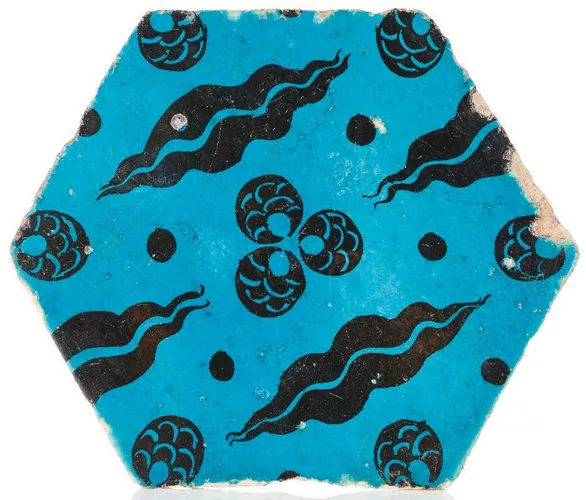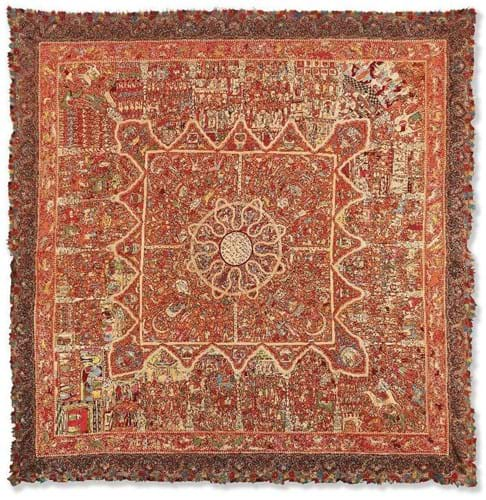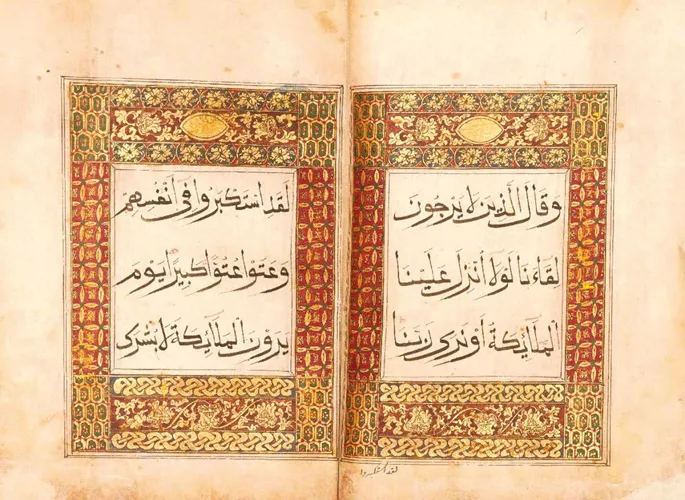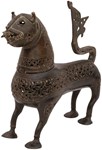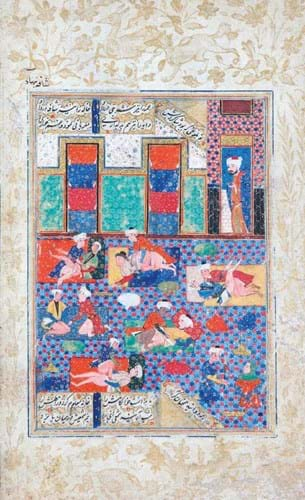
A 16th century folio from the collected works of the Persian poet and mystic, Sa’di of Shiraz – £16,000 at Roseberys.
Objects that shed light on a previously neglected area of study are warmly welcomed by the judges of the annual Asian Art in London awards.
And this year that element of novelty was provided by a rare example of late 16th century Iranian erotica. South London auction house Roseberys (25% buyer’s premium) had found this single folio manuscript of the collected works (Kulliyat) of the 13th century Persian poet and mystic, Sa’di of Shiraz in the collection of costume designer Anthony Powell (1935-2021).
The subject matter was not for everyone. The poem, which comprises 70 couplets, recounts the story of a young man who, seeking a divorce from his wife, embarks on an orgiastic spree with both the male and female members of her family. Elements of the narrative including some creative sexual acts are pictured in this folio.
Domenico Ingenito, a professor of Persian literature at the University of California, helped with the cataloguing for this folio which was offered for sale as part of the Antiquities, Indian & Islamic Arts sale on October 28. He noted that Sa’di’s obscene works have been little-studied and visual representations of such bawdy verses are extremely rare in Persian art, at least before the 17th century.
Stylistic features of this painting suggest that it was produced in Shiraz between the 1560s and the 1570s. Financial gain does not always follow academic importance but here, estimated at £3000-5000, the hammer price was £16,000.
Powerful tile pattern
Nonetheless, that was not the top price of the West Norwood sale.
That was the unexpected £88,000 bid for a rare 16th century tile from Ottoman Syria.
Around 12in (29cm) across and painted in black under a transparent blue glaze, it is decorated with one of the most recognisable Ottoman decorative motifs: the çintamani pattern. Pairs of wavy lines and groups of three dots represent the pelts of the striped tiger and spotted leopard that came to evoke strength and power.
Tiles of this design were used c.1550-1600 in the decoration of various private apartments in the Topkapi palace in Istanbul. This example was also from the Powell estate and came with an estimate of £3000-4000.
Guided at £2000-2500 but sold at £12,000 was a Sikh embroidered square shawl or amlikar rumal depicting scenes from the life of Iskander (Alexander the Great). Woven in pashmina and embroidered in wool in Kashmir in the first quarter of the 20th century, it replicates a famous shawl now in the Government Museum and Art Gallery in Chandigarh that was made for Maharaja Gulab Singh (r.1846-57) from Jammu and Kashmir and dated 1852.
These embroidered pictorial shawls are thought to have been exhibition or presentation pieces rather than for wearing.
Chinese Qur'an copy
Plenty of bidding also came for a Chinese copy of Juz 19 of the Qur’an from the mid-16th century.
Penned with five lines of black sini script to the page and an illuminated double page frontispiece in a typical Yunnan style, the colophon statement in red script on the last folio reads: It was copied by Shams al-Din ibn Musa al-Sini in the month of Safar of the year 953 AH (1546 AD) in the city of Yunnan one of the Chinese cities which has been honoured and blessed by Islam.
The leather binding with a blind tooled Islamic and Chinese influenced design was thought to be the original.
Part of a UK collection formed in the 1960s-70s, it brought £16,000 (estimate £1000-1500).


